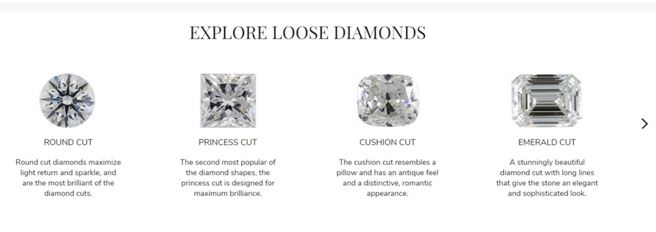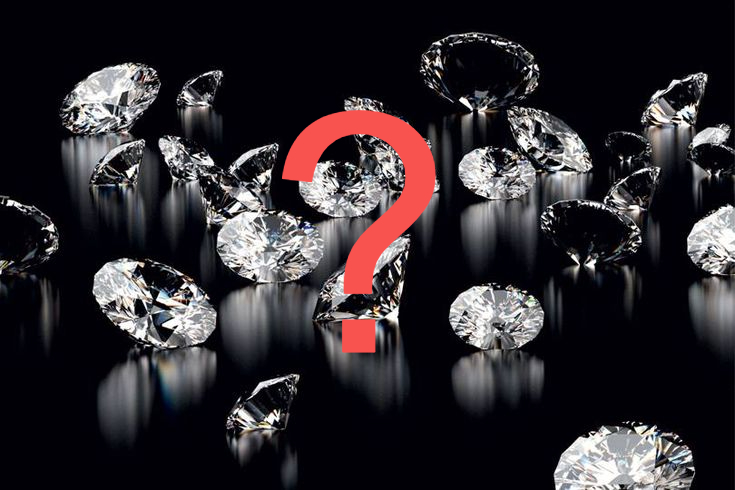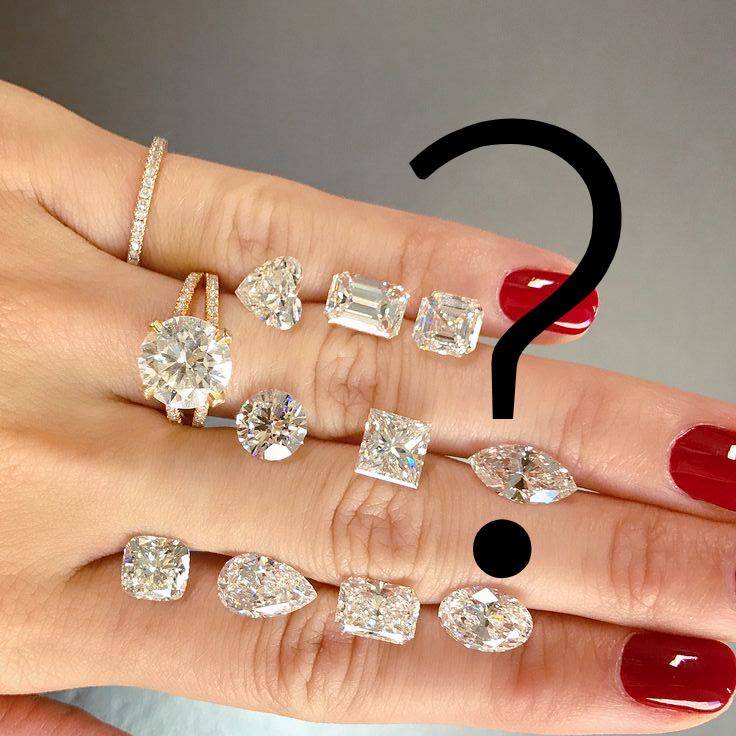EVERYTHING YOU NEED TO KNOW ABOUT LABORATORY MADE DIAMONDS
- Introduction
- Diamonds are very rare and this makes them expensive
- Discovery of a mining site for diamonds can take decades
- Laboratory made diamonds were first announced by General Electric in 1955.
- Since then, they have been on the increase.
- It is estimated that the laboratory-grown diamond industry is experiencing a 15% yearly expansion.
- This industry forms about 2% of the entire diamond industry valued at 83 billion dollars
- The lab-grown diamond industry represents the niche that is technologically sensitive and advancement driven.
- What do we mean by Man-made diamonds?
- Diamonds that are grown in a laboratory are called man-made or laboratory-made diamonds.
- They are different from diamond simulators as they are made from the same carbon atoms that form natural diamonds
- They are not fake diamonds.
- It is impossible to distinguish a natural diamond from a laboratory-grown diamond physically. Specialized equipment would be needed.
- How are Lab-grown diamonds created?
- Lab-grown diamonds are cultured in an environment that is similar to the natural environment where diamonds are formed.
- Naturally, diamonds are formed deep in the earth’s crust.
- Carbon dioxide is subjected to high temperatures and pressures.
- Lab-grown diamonds are cultivated using two methods:
- High-Pressure High Temperature (HPHT )
- Chemical Vapor Deposition (CVD)
- Are Lab-grown diamonds graded?
- Laboratory grown diamonds are graded
- They are sent to reputable grading laboratories for grading after cultivation
- The same standards used for natural diamonds are applicable. They are graded in terms of:
- Reputable laboratories like the Gemological Institute of America and the Gemological society of America grade lab-grown diamonds.
- Why should I own a Man-made diamond?
- First, they are way cheaper than their natural counterparts. You can get the same value at almost half the price.
- Second, lab-grown diamonds are environment-friendly. They do not lead to the pollution and disruption of the ecosystem that is associated with the mining of natural diamonds.
- Third, Lab-grown diamonds are conflict-free.
- Conflict diamonds are diamonds that are associated with any form of illegal practices like child labor, drugs, and the likes.
- Some natural diamonds have questionable origins and might be conflict diamonds
- Lab-grown diamonds are 100% conflict-free as their origins can easily be traced
- Fourth, laboratory-grown diamonds represent a brand of progressive and technologically minded individuals. They are the future of the industry. You should belong too!
- Fifth, Man-made diamonds give full power over the entire process. You can customize them to suit your taste. It sometimes includes deliberately introducing inclusions to give the desired effect!
- Where can I get a lab-grown diamond?
- Almost every reputable online store like James Allen, Blue Nile and a host of others have sections for laboratory-grown diamonds.
- Some stores specialize in the sales of the only man-made diamonds.
- Conclusion

The diamond industry today is worth about 83 billion dollars and it does not appear to be slowing down any time soon. Over time, this world has been dominated by large companies that seek to mine and discover new sites for diamonds. Now, keep in mind that diamonds are rare and the discovery process of a diamond site can take several decades, that is if you are lucky. It would also require a lot of manpower and skill to really find a site and then determine if it is economically feasible. This is one of the reasons why diamonds are expensive and valuable.
While all this is going on, there is a 2% of the industry that seeks to be different, that seeks to stand out from what others are doing.
This small percentage of the industry has chosen to go technological.
It is the niche of the lab-made diamonds.
This niche was first introduced by General Electric in February 1955. They were able to create the first laboratory-made diamonds as a product of years of research that had been going on. After they announced their new products, several other companies have also come after them to set up laboratories that grow diamonds.
The market has been expanding, especially among the people of the middle and lower social classes, who might not be able to afford the more expensive mined diamonds. This article would, therefore, give you a brief overview of everything you need to know about laboratory-made diamonds.
FIRST THING TO KNOW: WHAT DO WE MEAN BY LAB MADE DIAMONDS?
Lab-made diamonds, also called man-made diamonds or laboratory-grown diamonds are diamonds which are grown or cultured in a laboratory, using advanced technological methods. The man-made diamond industry has been around for more than 60 years now, but with the advent of newer, technological methods have seen a surge in demand for its products. Studies show that man-made diamonds have been projected to increase by as much as 15% every year.
That is not all.
This group of diamonds is also finding favor with many diamond lovers as evidenced by the growth of the industry in recent years. The reasons for this would be examined shortly.
Lab-made diamond, like natural diamonds, are also made of carbon atoms arranged in the typical crystal lattice structure.
Some people have referred to Lab-grown diamonds as synthetic or even worse ‘fake diamonds’
This terminology is not correct. Lab-grown diamonds are 100% diamonds! They are not fake as some belief and they are also not diamond simulators.
Diamond simulators are not diamonds. They do not have the same carbon atomic structure or physical properties that mark them out. Asa matter of fact, diamond simulators like Cubic Zirconia can be physically distinguished from man-made or mined diamonds.
However, it is impossible to distinguish a lab-grown diamond from a mined one physically. This is because they have the same chemical and physical structure. The only difference is where they came from!
HOW ARE LABORATORY MADE DIAMONDS FORMED?
For so many people, their minds cannot seem to contain the fact that a diamond would be made in the laboratory. It seems so unreal.
Well, it may seem so, but it is happening and it is real.
To understand what happens in the diamond lab, let us examine how natural diamonds are formed.
Diamonds are formed some 150 km deep into the earth’s crust. Geologists are not one hundred percent sure how this happens, but, one thing is clear; These diamond deposits have been there for between 1 -3 billion years.
Another clear fact is that the diamonds are also formed by the action of heat and pressure at these great depths on carbon dioxide.
When I say heat, I mean a large amount of heat of above 2000 Fahrenheit degrees range! There is also a tremendous amount of pressure that is applied to carbon dioxide in this process.
Little wonder the result of this process is the hardest substance known to man!
After the diamonds are formed in the earth’s crust, they have to get to the surface. They get to the surface by volcanic eruptions. Volcanic eruptions deposit them on the earth’s surface, forming what is known as Xenoliths, in which the diamond is embedded.
Researchers look for diamond deposits and when they are found, they explore the area to know if the quantity of the diamond deposits in the area is high enough for the areas to become a mine for economic production of diamonds.
Engineered diamonds are created in specialized labs in different parts of the world. These laboratories make use of the best scientifically proven techniques and equipment to grow their diamonds.
The technique is simple. They just aim to simulate the same environment that a natural diamond was exposed to before it was formed. This means they work with high degrees of pressure and temperature that would then cause the formation of the diamond.
There are two popular techniques employed in the laboratory creation of diamonds:
- High-pressure High Temperature (HPHT)
- Chemical Vapor Deposition (CVD)
The high-pressure high-temperature technique is very much what we described earlier. It involves using a belt press, a cubic press, and a split sphere press. These all provide high temperature and pressure environment to stimulate diamond formation.
The diamond to be cultivated starts from a diamond seed. The diamond seed is placed inside carbon and then exposed to high temperatures and pressures.
The Chemical Vapor deposition method utilizes a chamber. In this method, a diamond seed is also used, but this time is placed inside a sealed chamber, where temperature and pressure are added to it. Other gases like methane are also added in the chamber.
The heat and temperature changes would cause the deposition of carbon crystals on the diamond seed. Chemical Vapor Deposition is a relatively newer method that has perfected the diamond creation process and brings out the true crystalline structure of the diamond.
The overall product from either of these processes is a diamond that is structurally and physically similar to any natural diamond that is available. The diamond growth process usually takes from 2 to 6 weeks before a fully grown lab diamond is available.
ARE LAB GROWN DIAMONDS ALSO GRADED?
Sure!
As we said when we first began, lab-grown diamonds are real diamonds. This means that they are graded as real diamonds too.
Whenever a laboratory is done growing a diamond, they can send their diamonds to certified grading laboratories for grading. The choice of which grading labs to be used is subject to the preference of the diamond manufacturer. However, one of the most popular ones is the Gemological Institute of America, which developed the 4Cs of diamond. The 4Cs forms the criteria by which diamonds are assessed today. This body is the most common when it comes to diamond assessment.
Other commonly used diamond grading laboratories are International Gemological Institute, American Gemological Society, Antwerp World Diamond center and Gemological Science International.
The same criteria used in the grading of natural diamonds are used in the grading of man-made diamonds. All the parameters of cut, clarity, color, and carat would be employed.
The standard is not lowered for man-made diamonds.
In diamond grading, each diamond is compared to a set of standards for each grade. This comparison is carried out by several independent gemologists within the lab and the results of their findings are then analyzed and a grade is determined for the diamond. This process aims to make the grading process as objective as possible and even though there might be modifications in different laboratories, the process remains the same.
This process applies to a man-made diamond too.
Therefore, if you see a lab-grown diamond that is graded an excellent cut from a reputable and trusted laboratory, you can rest assured that it is truly an excellent cut!
WHY SHOULD YOU OWN A LAB GROWN DIAMOND?
You should get a lab-grown diamond and here are the reasons why:
- They are far cheaper than natural diamonds: Lab-grown diamonds are way less expensive than natural diamonds. In fact, it is said that lab-grown diamonds can be gotten at two-thirds or even one-third of the price of a natural diamond. The reason for this is not far-fetched: A natural diamond would require heavy equipment and manpower to discover before the entire process of mining even begins. They would require geologists, physicists, surveyors, engineers and a whole lot of people to even locate the rough diamond. After this, they then begin to cut the diamond, polish it and process it so it becomes commercially available for sale.
But this is not the case with lab-grown diamonds These diamonds are grown in the lab and this eliminates the need for mining. This point right here can cut costs almost halfway! So, the fact that a diamond passes through lesser hands before the final product is created contributes to the lesser price of man-made diamonds. With lab-grown diamonds, you can get the same brilliance and sparkle you would get with the natural diamonds at almost half the price.
- Environment-friendly: To mine diamonds, tons of rocks are destroyed. There is usually a very heavy upset to the ecosystem in the area. Even diamond mining companies know this and try to compensate in some ways to the people in the area. But the truth remains that an upset in the ecosystem cannot be compensated for by helping individuals in the community. It is the environment that suffers the wrong! Several plants and animals are displaced, innumerable microorganisms are affected and in these days of global climate change, diamond mining is truly hurting the system. It is said that for every carat of diamond that is mined, about 100 square feet of land is disturbed and about 3 tons of mineral waste is incurred! That is huge!
Growing diamonds in a laboratory does not hurt the ecosystem. It does not disrupt plant or animal life and there are no dynamite blasts to shatter rocks into pieces during the mining process. Therefore, it is a more environmentally friendly option.
- Conflict free: Several years ago, there was chaos in the diamond industry as several diamonds were discovered to be obtained through child labor, human trafficking and the proceeds of the sale of these diamonds were used to fund drug cartels and women slavery. Such diamonds are known as conflict diamonds. Although there has been a decrease in the number of cases, thanks to the Kimberely process, there are still some conflict diamonds. It is logical to expect that not all diamond sources can be traced. There are several mining ports all over the world and it would be impossible to always state the exact origin of each diamond that comes into the market place. With Lab-grown diamonds, however, diamonds entirely conflict-free. Since they are not mined, they can be easily traced to where they came from. Therefore, it is safe to say that if you are using a lab-grown diamond, you are using a 100% conflict-free diamond!
- If you are someone who is very interested in technology and modern advancements, then the lab-grown diamond is for you. It combines cutting edge technology with progressive-minded workers who keep pushing and breaking frontiers. The fusion of technology with the diamond industry has received a great boost as a result of lab-grown diamonds.
- Customized diamonds: This is perhaps one of the best reasons why you should get a lab-grown diamond. You can decide everything you want about your diamond, right from the growth to the finishing. It gives you a truly customized diamond. If you are someone who loves to stand out, every time, you should consider lab-grown diamonds because they give you full control over the entire process. Also, remember that you would be getting a cheaper option by buying a man-made diamond. Since this process also takes place in a laboratory, you do not have to wait for billions of years to get your diamond. In a matter of weeks, you can have your customized diamond ring delivered to you. It is amazing that the whole process from the creation to the completion can be done simply and quickly. Furthermore, you can even get to determine if you want to intentionally add some inclusions to give a particular look. It is all possible because you have complete control over the entire process!
WHERE CAN YOU GET A MAN-MADE DIAMOND?
Virtually everywhere diamonds are sold! Any reputable online store for diamonds would have a section for Lab-grown diamond. As a matter of fact, some stores deal only with lab-grown diamonds. You can easily contact them and give them specifications for what you want. Remember, they are also diamonds and the rules for getting natural diamonds also apply. Make sure you visually inspect any diamond you want to buy. Irrespective of whatever grade is assigned, ask for High definition pictures and videos that show the diamond from different angles and different lighting conditions. Make sure you do this before you go ahead to purchase the diamond. It is also better to purchase diamonds from reputable online stores so that you can be sure you are getting a 100% Lab-grown diamond.
Some people also feel that laboratory-grown diamonds are not as durable as their natural counterparts. You might also be entertaining doubts that it might easily break or chip off, that it might have cracks or lines if it falls.
That is not true.
As we have seen, they are made from the same carbon structure. As a matter of fact, some of them can even be engineered to be harder than natural diamonds, depending on preferences. Therefore, there is no question of the durability of man-made diamonds! They have the same physical and chemical properties of natural diamonds.
In conclusion, laboratory-grown diamonds are here and they are the future of the diamond business.
As we like to say, they have come and they are here to stay.
As we said earlier, they are particularly popular among people who might not be able to afford the more expensive natural diamonds but would still want to have a diamond that they can call theirs.
Irrespective of what people say, the true value of diamonds is the value that the user attaches to it. The sentiment of having the brightness and sparkle from the ornament is the greatest asset it truly has. Therefore, you determine the significance and value of the diamond. If you want to go for the lab-grown diamonds, then do so and do not allow anyone makes you think otherwise.
Afterall, Labgrown diamonds are real diamonds!


